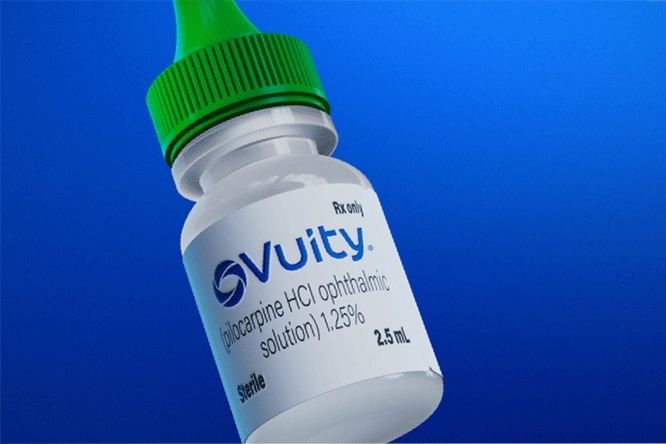
The intersection of iron deficiency and thalassemia presents a complex clinical challenge, demanding meticulous diagnostic precision and careful therapeutic management. Thalassemia, a group of inherited blood disorders characterized by abnormal hemoglobin production, often leads to microcytic anemia, which can mimic iron deficiency. Furthermore, individuals with thalassemia traits (carriers) can independently develop concurrent iron deficiency due to various physiological or pathological reasons. The critical distinction lies in the fact that while iron deficiency requires supplementation, thalassemia itself can predispose to iron overload, making indiscriminate iron administration potentially harmful.
Introduction: Navigating the Intersection of Thalassemia and Iron Deficiency
Thalassemia arises from genetic defects affecting the synthesis of alpha or beta globin chains, essential components of hemoglobin. Depending on the severity, it can range from asymptomatic carrier states (thalassemia trait) with mild microcytic anemia to severe, transfusion-dependent forms. A hallmark of many thalassemia traits is microcytosis (small red blood cells) and hypochromia (pale red blood cells), precisely the findings also characteristic of iron deficiency anemia.
The crucial point of divergence is iron status. Thalassemia major, due to chronic blood transfusions and increased gastrointestinal iron absorption, typically results in iron overload. Even thalassemia intermedia can lead to iron accumulation. Conversely, iron deficiency anemia is caused by insufficient iron to support hemoglobin synthesis. Therefore, prescribing iron to a patient whose microcytosis is solely due to a thalassemia trait, or worse, to a patient with a more severe thalassemia variant, without confirmed iron deficiency, risks exacerbating iron overload, leading to organ damage (hemochromatosis).
This guide focuses on the specific scenario where a patient with a thalassemia trait or at risk of inheriting thalassemia also presents with or is at risk of developing genuine iron deficiency. The challenge is to accurately confirm iron deficiency amidst the microcytosis caused by the thalassemia trait before initiating iron therapy.
Understanding the Patient Profile: Who is at Risk?
A patient requiring this careful differentiation typically falls into one of these categories:
- Known Thalassemia Trait Carrier: An individual diagnosed with alpha or beta thalassemia trait (e.g., HbA2 elevation for beta-thalassemia minor, or specific genetic deletions for alpha-thalassemia) who experiences symptoms or laboratory findings suggestive of new-onset iron deficiency.
- Ethnic/Geographic Predisposition with Microcytic Anemia: Patients from high-prevalence areas for thalassemia (e.g., Mediterranean, Middle Eastern, Southeast Asian, Indian subcontinent, parts of Africa) presenting with unexplained microcytic anemia.
- Family History of Thalassemia: Individuals with a family history of thalassemia (major or minor) who develop microcytic anemia.
- Pregnant Women or Those Planning Pregnancy: Pregnancy significantly increases iron demand, making iron deficiency common. Concurrent thalassemia trait necessitates careful monitoring.
Risk Factors for Developing Iron Deficiency in these individuals include:
- Dietary Insufficiency: Vegetarian/vegan diets, low intake of iron-rich foods.
- Increased Physiological Demand: Rapid growth in infancy or adolescence, pregnancy, lactation.
- Blood Loss: Menstruation (heavy periods), gastrointestinal bleeding (ulcers, polyps, inflammatory bowel disease, occult blood loss), frequent blood donations.
- Malabsorption Syndromes: Celiac disease, Crohn’s disease, gastric bypass surgery, Helicobacter pylori infection.
- Chronic Kidney Disease: Can lead to both iron deficiency and functional iron deficiency.
Comprehensive Diagnostic Workup: Confirming Iron Deficiency in the Context of Thalassemia
The cornerstone of safe and effective management is a thorough diagnostic evaluation to unequivocally establish iron deficiency before prescribing supplementation.
- Complete Blood Count (CBC) with Differential and Red Blood Cell Indices:
- Hemoglobin (Hb) and Hematocrit (Hct): Will be reduced in anemia.
- Mean Corpuscular Volume (MCV): Typically low (<80 fL) in both iron deficiency and thalassemia traits.
- Mean Corpuscular Hemoglobin (MCH): Also low in both conditions.
- Red Blood Cell Count (RBC): Often normal or even elevated in thalassemia trait, which can help differentiate from iron deficiency where RBC count is typically reduced or normal.
- Red Cell Distribution Width (RDW): Usually elevated in iron deficiency (reflecting varying cell sizes), but often normal or mildly elevated in thalassemia trait.
- Peripheral Blood Smear: May show microcytic, hypochromic cells, poikilocytosis, target cells (more common in thalassemia).
- Iron Studies (Crucial for Differentiation): These are indispensable for confirming or excluding iron deficiency.
- Serum Ferritin: This is the most sensitive and specific marker for body iron stores. A low serum ferritin (<30 ng/mL, or sometimes <15-20 ng/mL depending on lab specific ranges and clinical context) is diagnostic of iron deficiency. Crucially, ferritin can be falsely elevated in inflammatory conditions (acute phase reactant), liver disease, or certain malignancies, even in the presence of co-existing iron deficiency. If inflammation is suspected (e.g., elevated C-reactive protein), a higher ferritin cutoff may be needed, or transferrin saturation becomes more critical.
- Serum Iron: Measures circulating iron bound to transferrin. Typically low in iron deficiency.
- Total Iron-Binding Capacity (TIBC) or Transferrin: Measures the total capacity of transferrin to bind iron. TIBC is typically elevated in iron deficiency as the body tries to maximize absorption, but normal or low in thalassemia. Transferrin saturation (serum iron/TIBC x 100) is low (<15-20%) in iron deficiency.
- Soluble Transferrin Receptor (sTfR): Levels are elevated in iron deficiency and are not affected by inflammation, making it a useful marker when ferritin is ambiguous. It is typically normal in thalassemia trait.
- Hemoglobin Electrophoresis or High-Performance Liquid Chromatography (HPLC):
- This test is essential to diagnose or confirm thalassemia trait.
- Beta Thalassemia Trait: Characterized by elevated Hemoglobin A2 (HbA2 >3.5%) and sometimes mildly elevated Hemoglobin F (HbF).
- Alpha Thalassemia Trait: Often requires genetic testing to identify specific gene deletions, as Hb electrophoresis may be normal. However, presence of Bart’s hemoglobin (newborns) or HbH (older individuals) suggests more severe alpha-thalassemia forms.
- This test is essential to diagnose or confirm thalassemia trait.
- Mentzer Index (MCV/RBC): While not definitive, a Mentzer Index >13 suggests iron deficiency, while <13 suggests thalassemia trait. This is a quick screening tool but must be followed by definitive iron studies and Hb electrophoresis.
Decision Point: Iron supplementation should only be prescribed if iron deficiency is definitively confirmed by iron studies (e.g., low ferritin, low transferrin saturation, high TIBC/transferrin) in addition to the established or suspected thalassemia trait. Never prescribe iron based solely on microcytic anemia in a patient with suspected thalassemia trait without full iron studies to prevent iatrogenic iron overload.
Model Prescription for Oral Iron Supplementation
Once a definitive diagnosis of iron deficiency is established in a patient with a thalassemia trait, oral iron supplementation is the first-line treatment. The choice of iron preparation, dosage, and administration method are critical for efficacy and tolerability.
PRESCRIPTION
Date: October 26, 2023
Patient Name: Ms. Anya Sharma Date of Birth: 05/15/1992 (31 years old) Address: 123 Main Street, Anytown, USA 12345 Diagnosis: Iron Deficiency Anemia (confirmed by low ferritin and low transferrin saturation) in a patient with Beta Thalassemia Minor (confirmed by elevated HbA2).
Prescriber Information: Dr. Eleanor Vance, MD License No.: MD123456 DEA No.: AB7890123 Address: 456 Oak Avenue, Anytown, USA 12345 Phone: (555) 123-4567
Rx:
Medication: Ferrous Sulfate (FeSO4) 325 mg tablets (Elemental Iron: 65 mg per tablet)
Sig: Take one (1) tablet orally once daily. (Interpret as: Take one tablet by mouth one time a day.)
Instructions: Administer on an empty stomach, at least one hour before or two hours after meals, ideally with a source of Vitamin C (e.g., orange juice) to enhance absorption. If significant gastrointestinal upset occurs, it may be taken with a small amount of food. Avoid taking with dairy products, antacids, calcium supplements, coffee, or tea.
Dispense: #90 (Ninety) tablets
Refills: 2 (Two) – This allows for a 3-month initial course, with ongoing treatment subject to follow-up and reassessment of iron stores and hemoglobin levels.
Prescriber Signature: (Signature of Dr. Eleanor Vance, MD)
Choice of Iron Supplement and Administration Guidelines
1. Choice of Iron Salt:
- Ferrous Sulfate (FeSO4): Most commonly prescribed, cost-effective, and generally well-absorbed. The 325 mg tablet typically contains 65 mg of elemental iron.
- Ferrous Gluconate: May be better tolerated by some patients, but contains less elemental iron per tablet (e.g., 300 mg ferrous gluconate contains about 34 mg elemental iron).
- Ferrous Fumarate: Similar efficacy to ferrous sulfate; 325 mg contains about 106 mg elemental iron.
- Polysaccharide Iron Complex: Contains a higher percentage of elemental iron and may cause less GI upset for some, but often more expensive.
The goal is to provide 60-100 mg of elemental iron per day. For most patients, one 325 mg ferrous sulfate tablet (65 mg elemental iron) daily is sufficient and well-tolerated. Higher doses (e.g., twice daily) might be considered for severe deficiency or malabsorption but increase the risk of side effects.
2. Administration:
- Empty Stomach: Iron is best absorbed in an acidic environment. Taking it 1 hour before or 2 hours after meals minimizes interaction with food components (phytates, tannins, calcium) that can inhibit absorption.
- Vitamin C: Co-administration with 250-500 mg of ascorbic acid (Vitamin C) or a glass of orange juice significantly enhances iron absorption.
- Avoid Inhibitors: Advise patients to avoid taking iron supplements with milk, antacids, calcium supplements, coffee, or tea, as these can reduce absorption.
- Managing Side Effects:
- Gastrointestinal Upset (Nausea, Vomiting, Abdominal Pain): Taking iron with a small amount of food may reduce these symptoms, though it might reduce absorption slightly.
- Constipation: This is a common and distressing side effect. Recommend increased fluid intake, dietary fiber, and consider over-the-counter stool softeners (e.g., docusate sodium).
- Dark Stools: This is a normal, harmless effect of unabsorbed iron. Patients should be informed to prevent alarm.
3. Duration of Treatment:
- Iron therapy typically continues for 3-6 months after the hemoglobin level has normalized to replenish iron stores. This often translates to a total treatment period of 6-9 months. Patients with ongoing blood loss or malabsorption may require longer or intermittent therapy.
Monitoring and Follow-up
Close monitoring is paramount to ensure efficacy, manage side effects, and, crucially, prevent iatrogenic iron overload in a patient with a thalassemia trait.
- Initial Follow-up (2-4 weeks after initiation):
- Symptom Review: Assess for improvement in fatigue, pallor, and other symptoms of anemia.
- Side Effects: Inquire about GI upset, constipation, and adherence to the regimen. Adjust administration instructions or consider a different iron formulation if necessary.
- Reticulocyte Count: A rise in reticulocyte count (immature red blood cells) around 7-10 days after starting iron is an early sign of bone marrow response.
- Hemoglobin (Hb): Expect a rise of approximately 1-2 g/dL in Hb after 4 weeks of treatment if the patient is compliant and absorbing iron.
- Subsequent Follow-up (Every 3 months, or as clinically indicated):
- Complete Blood Count (CBC): Monitor Hb/Hct for continued improvement and normalization.
- Iron Studies: Recheck serum ferritin and transferrin saturation. This is critical.
- The goal is to normalize Hb and replenish iron stores, typically aiming for a serum ferritin >50 ng/mL (some sources suggest >100 ng/mL) and normal transferrin saturation.
- Discontinue iron supplementation once iron stores are repleted. Continued iron therapy beyond this point, especially in someone with a thalassemia trait, significantly increases the risk of iron overload.
- Consider Repeat Hemoglobin Electrophoresis/HPLC: If there were initial ambiguities or if the patient’s response is atypical, a repeat may be indicated. However, the thalassemia trait itself (e.g., high HbA2) will not change with iron therapy.
- Long-term Monitoring: For patients with ongoing risk factors for iron deficiency (e.g., heavy menstrual bleeding, recurrent GI blood loss), periodic monitoring of CBC and iron studies may be necessary even after initial repletion, to detect and manage recurrence promptly. The presence of a thalassemia trait makes this ongoing vigilance even more important.
Patient Education and Ancillary Advice
Effective patient education is vital for adherence and safe management.
- Importance of Adherence: Emphasize that consistent daily intake is crucial for replenishing iron stores and that it takes months, not weeks, to achieve this.
- Dietary Iron: Review dietary sources of iron. Distinguish between heme iron (red meat, poultry, fish – better absorbed) and non-heme iron (leafy greens, beans, fortified cereals – absorption enhanced by Vitamin C). While iron supplements are primary, a balanced diet supports overall health.
- Side Effect Management: Proactively discuss potential side effects (constipation, dark stools, GI upset) and strategies to manage them.
- Warning Signs: Instruct patients to report any unusual or severe symptoms, persistent side effects, or lack of improvement in energy levels.
- Genetic Counseling: For patients diagnosed with thalassemia trait, especially if they are of childbearing age or planning a family, genetic counseling is highly recommended. This helps them understand the risks of passing the trait to offspring and the implications if their partner also carries a thalassemia trait.
- Avoid Self-Medication: Strongly advise against unsupervised or prolonged iron supplementation, given the potential for iron overload, especially in the context of thalassemia.
When to Refer
Referral to a specialist (hematologist or gastroenterologist) should be considered in the following circumstances:
- Failure to Respond to Oral Iron: If Hb levels do not rise as expected despite good adherence and appropriate dosing, investigate for malabsorption, ongoing occult blood loss, or an alternative diagnosis.
- Severe Malabsorption: Patients with confirmed malabsorption syndromes may require intravenous iron therapy.
- Suspected Chronic Blood Loss: If the cause of iron deficiency is unclear, especially in men or postmenopausal women, further investigation for gastrointestinal bleeding is warranted.
- Complex Thalassemia: If the thalassemia diagnosis is unclear or progression to a more severe form is suspected, referral to a hematologist is essential.
- Iron Overload: If iron studies show signs of iron overload during or after treatment, particularly if ferritin levels become excessively high, hematology consultation is critical.
Conclusion
Prescribing for iron deficiency in a patient with a thalassemia trait requires a nuanced and evidence-based approach. The primary concern is to avoid contributing to iron overload while effectively treating genuine iron deficiency. This necessitates a comprehensive diagnostic workup, a carefully formulated prescription, diligent monitoring of both hemoglobin and iron stores, and thorough patient education. By adhering to these steps, healthcare professionals can ensure optimal patient outcomes, balancing the need for iron repletion with the imperative to prevent iatrogenic harm in this complex patient population.
References
- Ganz, T., & Nemeth, E. (2012). Iron homeostasis in host defence and inflammation. Nature Reviews Immunology, 12(10), 690-700. (Provides fundamental understanding of iron regulation and ferritin as an acute phase reactant).
- Hoffbrand, A. V., & Atkin, S. (2017). Essential Haematology (7th ed.). Wiley-Blackwell. (Classic textbook for comprehensive understanding of anemias and thalassemias).
- National Institute for Health and Care Excellence (NICE). (2020). Anaemia – iron deficiency. NICE Clinical Knowledge Summary. (Provides practical guidance on diagnosis and management of iron deficiency).
- UpToDate. (Accessed October 2023). Approach to the adult with microcytic anemia. (Comprehensive online resource for clinical decision-making, regularly updated, detailing diagnostic algorithms for microcytic anemias, including differentiation of iron deficiency from thalassemia).
- UpToDate. (Accessed October 2023). Treatment of iron deficiency anemia in adults. (Details various iron preparations, dosing, administration, side effects, and monitoring requirements).
- Weatherall, D. J., & Clegg, J. B. (2001). The Thalassemia Syndromes. Blackwell Science. (Definitive text on thalassemia, offering deep insight into its genetics, pathophysiology, and clinical management).
- World Health Organization (WHO). (2001). Iron Deficiency Anaemia: Assessment, Prevention, and Control. A Guide for Programme Managers. WHO Press. (Guidelines on iron deficiency management, particularly in public health contexts, but with relevant clinical principles).







